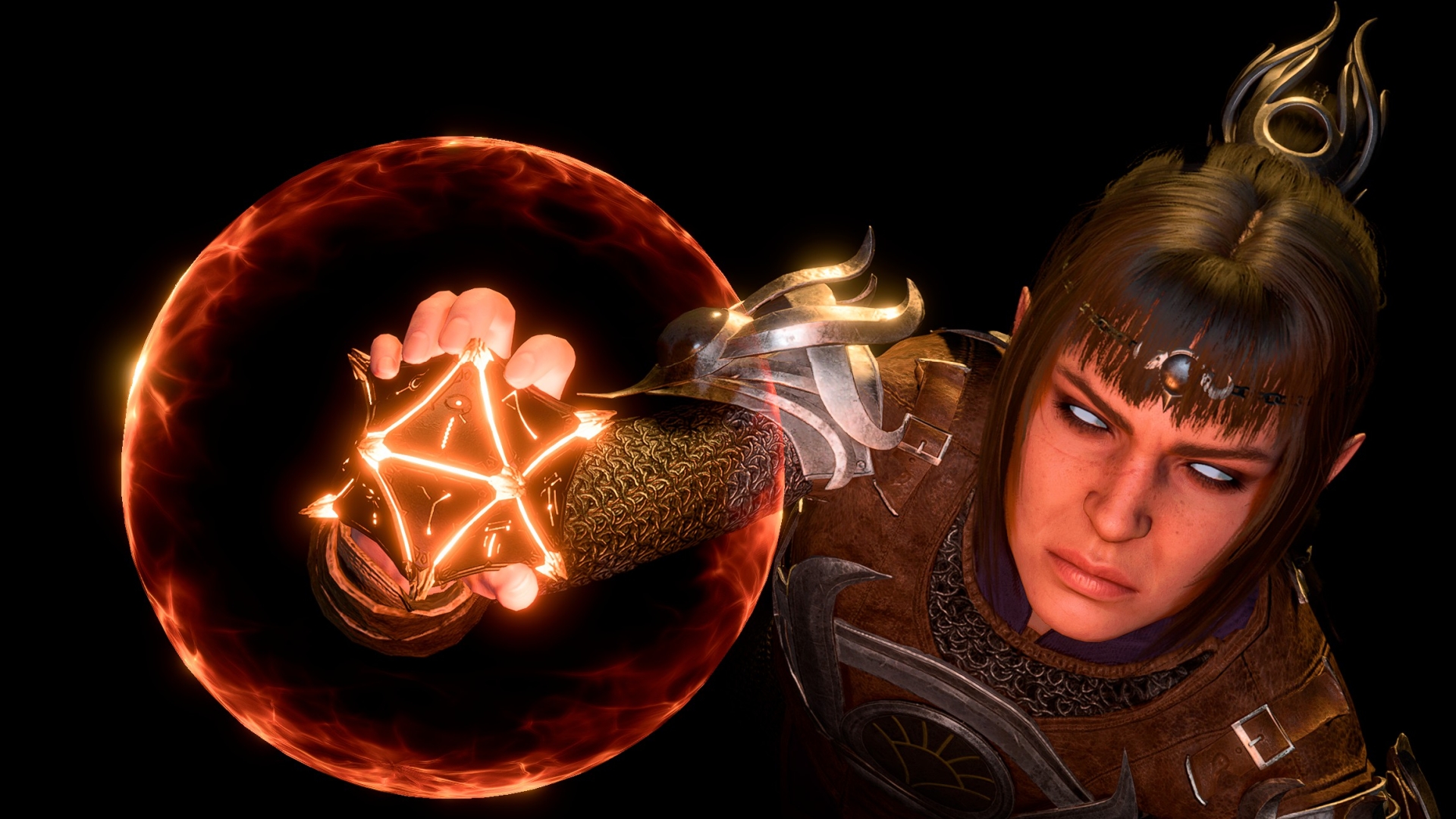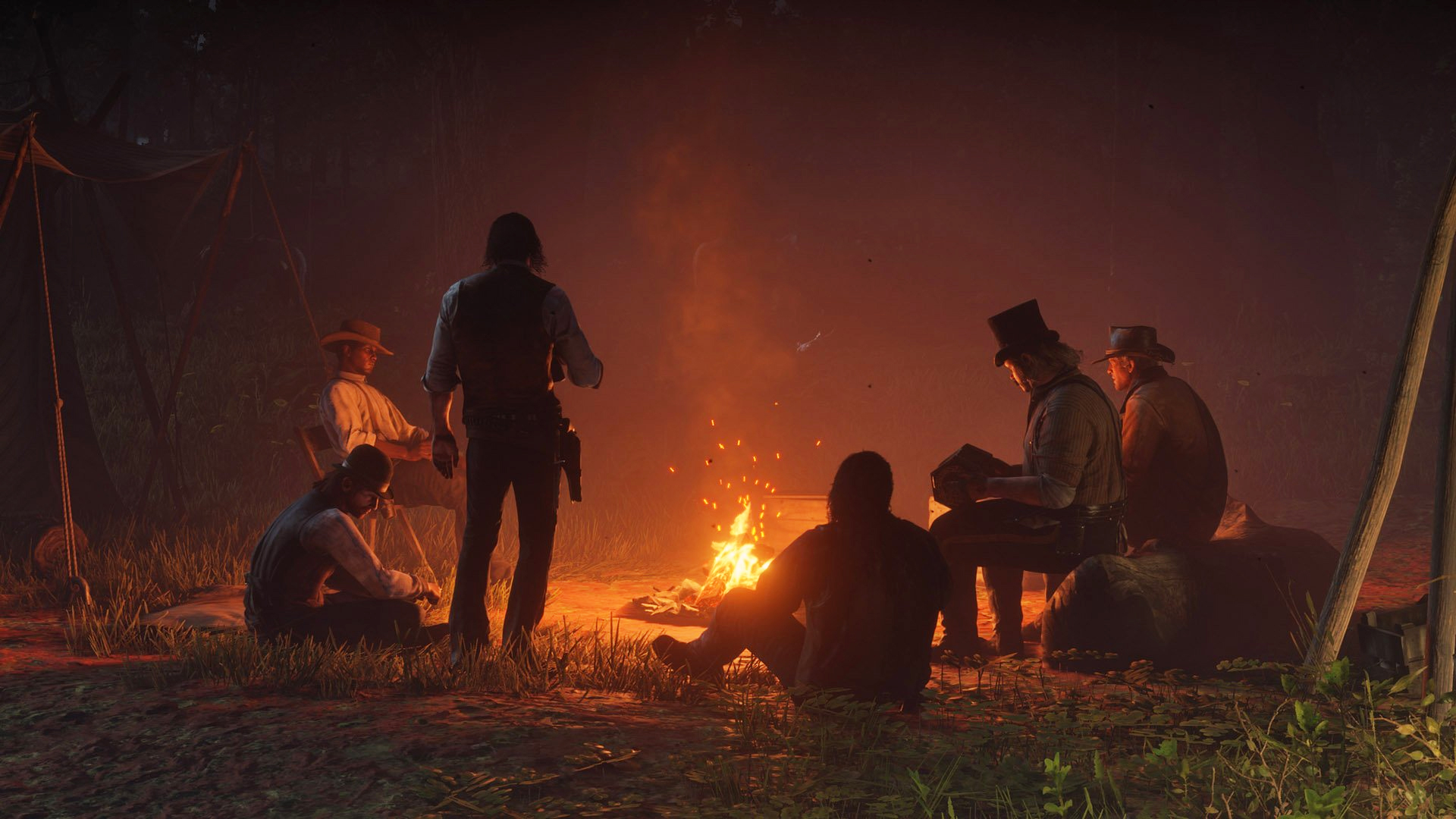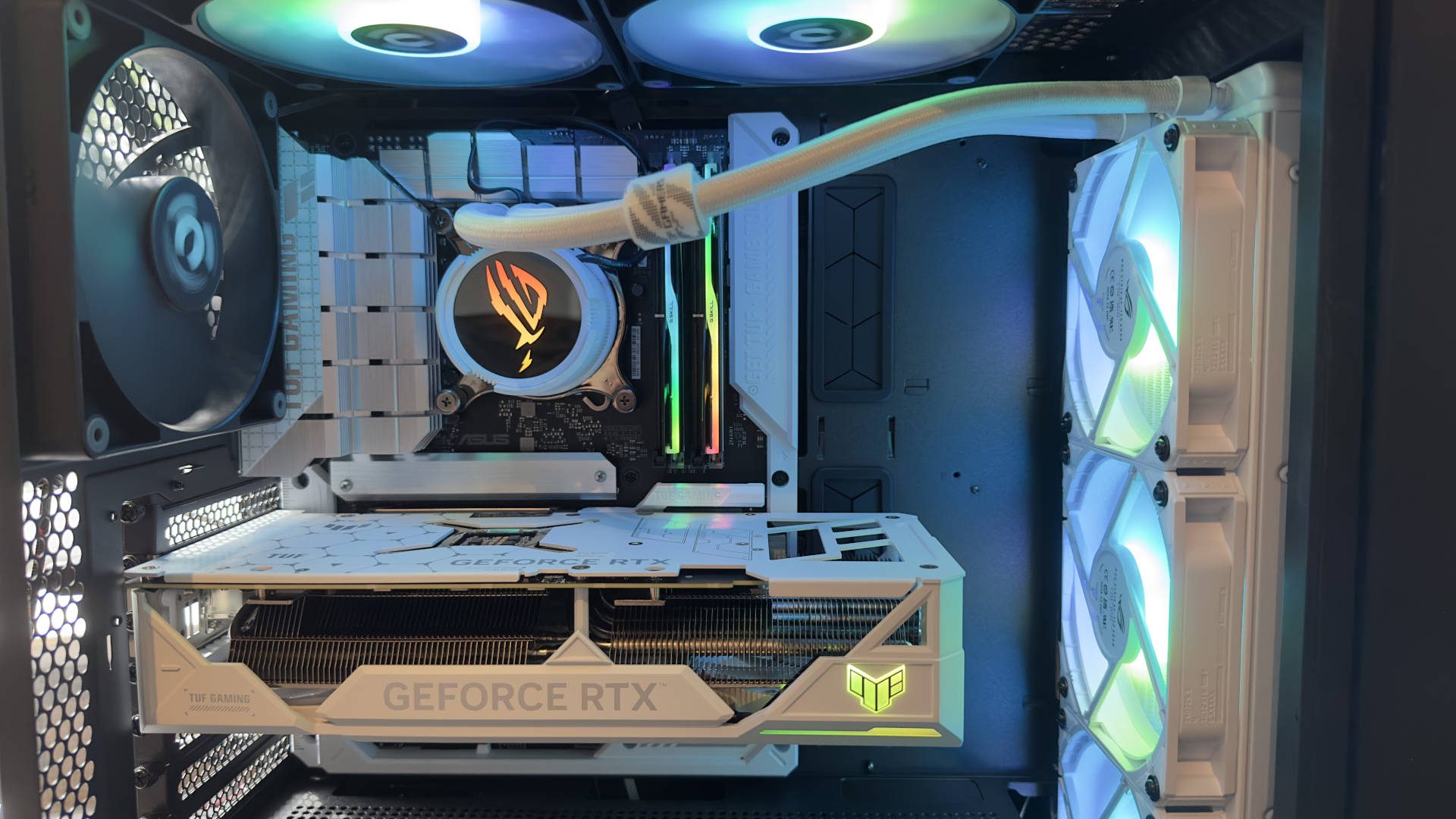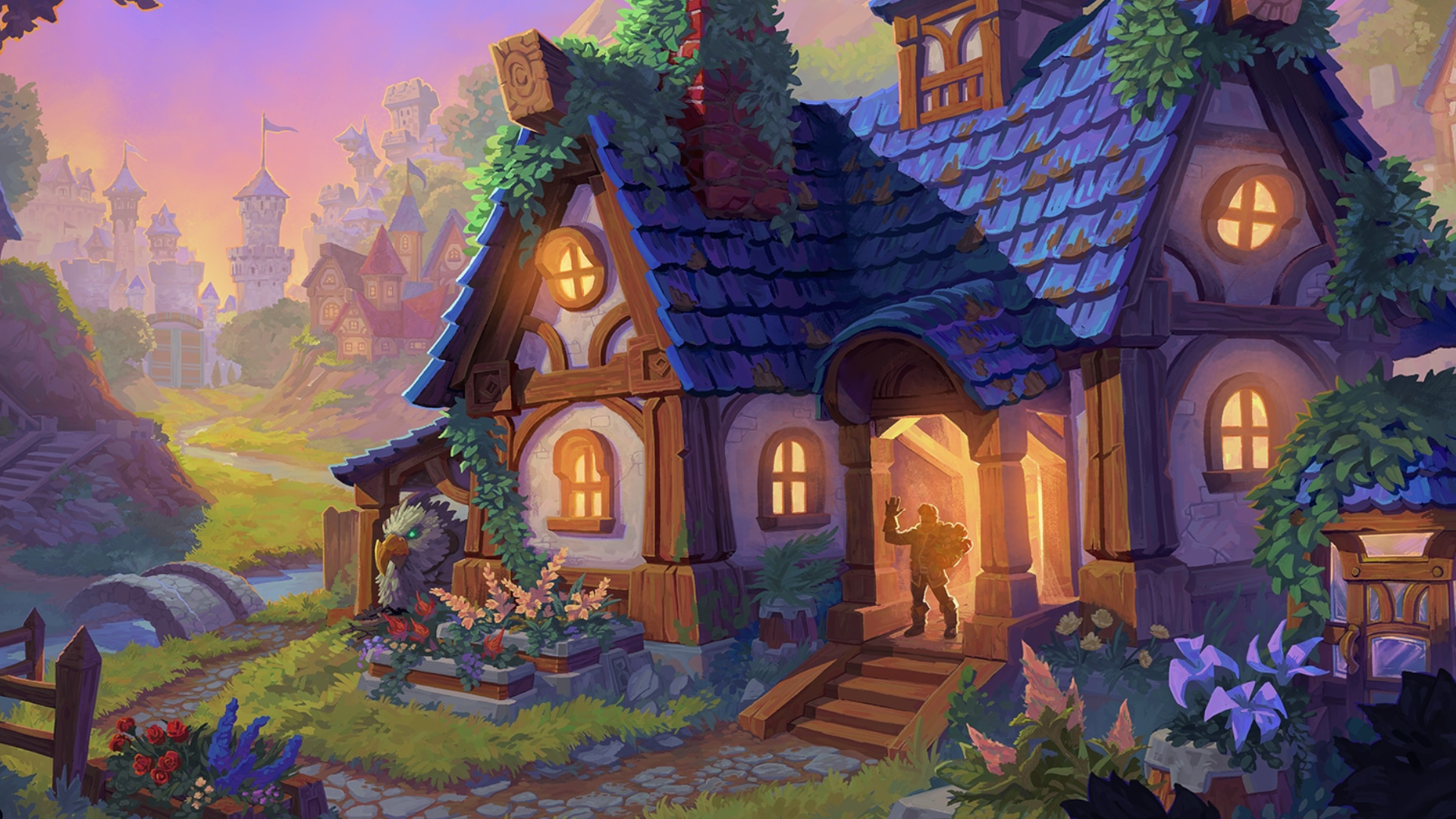
Why stick with just one class when you could have, like, four?
Baldur’s Gate 3’s multiclass system has me giddy to get busy crafting some kind of messed up new type of guy out of the component parts of Dungeons & Dragons like I did in CRPGs of yore, a Fighter / Mage / Artificer / Hierophant / Whatever, man. Multiclassing has always been synonymous with getting the most out of these games for the more grognardy sort of RPG-liker.
D&D’s multiclass rules will let you combine multiple Baldur’s Gate 3 classes together into a hybrid that’s more powerful, or maybe just more fun, than either individually. You’re also walking a tightrope, risking a watered down character if you don’t manage a careful balance of how much to invest in each class and when. In the first part of this guide, I’ll go over the basic rules and best practices of multiclassing, but you can skip to the second section for a collection of multiclass builds and multiclass ideas.
Note: Pre-release, this guide is based on Baldur’s Gate 3’s early access, the tabletop version of Dungeons & Dragons 5e, and what Larian has stated publicly about the system. We’ll be updating it based on what works best for us in the full game after it comes out August 3.
How to multiclass
Each time you level up in Baldur’s Gate 3, you can choose any of its 12 classes to progress in. Baldur’s Gate 3 has actually removed tabletop attribute restrictions from multiclasses, so your only restriction is whether the choice is worthwhile or not.
Baldur’s Gate 3 has a relatively low level cap of 12, and multiclassing can delay or lock you out of endgame abilities—how much of a loss this is depends on the class. A lot of key bonuses are also tied to the level of your individual classes as opposed to your overall level. For example, you get an “ASI” or feat/attribute bonus every four levels of a class—a level 8 fighter would have two ASIs, while a 5 Fighter/3 Rogue would have just one.
Other level milestones to keep in mind:
Extra Attack: Fighters, Barbarians, Rangers, Monks, and Paladins get a second full attack per turn at level 5. Blade/Valour Bards get this at level 6. Extra Attack is a priority ability you don’t want to delay more than one or two levels.Subclass: Most classes let you choose a subclass at level 3 (your Bard college, for example). This is often, but not always, the minimum number of levels you want to hit in a second or third class. Most spellcasters, and also Paladins, choose their subclass at level 1.Spell levels: Full casters gain new spell levels and spell slots every odd class level. Additionally, spellcaster/spellcaster multiclasses have a shared pool of spell slots, removing a major disadvantage of this kind of character in older versions of D&D. A Wizard 4/Cleric 3 can only cast level 2 spells from each class, but will have a large number of spell slots to devote to each, with their Cleric spells able to go in Wizard slots and vice versa—it’s not known if Larian has tweaked that progression from tabletop rules, though.Proficiencies: Classes gain fewer weapon, skill, and saving throw proficiencies when chosen later on than at level 1. It can sometimes be beneficial to choose a class like Fighter or Rogue at level 1 for their excellent martial/skill proficiencies, even if they aren’t going to be your main class focus.
The Sorcadin: A Holy Spellsword Guy
(Image credit: Larian)
Paladin 2 / Sorcerer 10 ⚔️👼️
Pick this if you want: A knight errant-flavored spellsword. A Kensai/Mage for the 2020s.Key Abilities: Divine Smite + Sorcerer spell slots, Haste, *Green Flame Blade, *Booming BladePriority Attributes: Charisma, StrengthSecondary Attributes: Constitution, DexterityNon-combat capability: Pretty good! Definitely get proficiency in Persuade.Recommended starting race: Half-Elf, Half-Orc, Zariel Tiefling, DragonbornLeveling order: Take your two levels of Pally, then all Sorcerer, baby.
This is the one with all the hubbub around it. I detect the same “D&D Forum Guy” energy as the dread Kensai/Mage dual-class build from Baldur’s Gate 2. Essentially, the idea is that Paladins and Sorcerers both run on Charisma, letting you crank one stat for both Sorcerer crowd control, damage, and buffs, as well as Paladin support abilities.
The jewel in the crown is the Paladin’s Divine Smite ability, which adds anywhere from 2-6d8 damage (2-48 damage depending on the spell slot level you use and whether your enemy is undead) on top of your base damage. Additionally, Paladins and Sorcerers, with their high Charisma and ideally proficiency in Persuade make a great “face” for the party, opening up non-combat-reliant quest solutions.
The big question is whether Larian will implement the tabletop cantrips Green Flame Blade and Booming Blade. Essentially, the spells function as full melee attacks in exchange for cantrip slots, making up for the traditional Paladin 2 / Sorcerer 10’s loss of Extra Attack at Paladin level 5, and even giving Sorcadins bonus melee attacks at an earlier point in the game. The cantrips did not appear in early access, and Larian has not confirmed their status in the final game either way. Their presence will make or break the Paladin 2 / Sorcerer 10.
Absent those cantrips, this specific version of the build becomes a lot less desirable, but fear not, we have backups. There’s already an early access mod to add the cantrips back in the game, and it presumably won’t take too much tinkering to get that working with the release build. Otherwise, a Paladin 6 / Sorcerer 6 would be more amenable to a melee cantrip-less world, playing the first half of the game as a straight Paladin, then trading your high level abilities for Divine Smite spell slots and more limited spell utility.
Consider also a Paladin 2 / Blade or Valour Bard 10 for Charisma casting spell slots and extra attack, or a Paladin 2 / Warlock 10 depending on how much of the tabletop Hexblade/Pact of the Blade subclass makes it to BG3 (folded into the Warlock at large) as seems to be implied by this interview with BG3 systems designer Nick Pechenin in Italian publication Multiplayer.it.
Subclasses are less central to this build, but I’d lean toward Oath of Vengeance or Oathbreaker Paladins for their damage focus and Draconic Bloodline or Wild Magic Sorcerer.
Tanky Battlemage
(Image credit: Larian)
Fighter 2 / Wizard 10 🛡️🧙
Pick this if you want: A battlemage, a character primarily focused on spellcasting, but with heavy armor, a shield, and melee competency helping them with survivability. Key Abilities: Wizard spells, Heavy Armor Proficiency, Martial Weapon Proficiency, Shield Proficiency, Action Surge.Priority Attributes: IntelligenceSecondary Attributes: Constitution, *DexterityNon-combat capability: Not as great, you’d have to carve out a place for it with skill proficiency ASIs.Recommended starting race: High Elf, Githyanki, Gnome, Asmodeus or Mephistopheles TieflingLeveling order: One or two levels of Fighter, depending on if you want Action Surge, then all Wizard.
Many classes, including spellcasters, will find a lot of benefit in taking just one or two levels of Fighter at the start of their build thanks to their bevy of proficiencies opening up gear options for more limited classes.
All of those could prove beneficial, especially to an otherwise-easy- to- kill Wizard, and at level 2 Fighters gain Action Surge, an extra main action usable once per short rest. The bonus action and proficiencies could prove beneficial to any number of character roles.
A Fighter 1/ Wizard 11 would generally be harder to kill than a straight Wiz, with more options when cornered by enemies, while only delaying and not losing endgame spells. Bump that Fighter level to 2, and you lose sixth circle spells in favor of Action Surge throughout the game.
You’d basically play this as a straight Wizard, trading pure glass cannon spell power for a little more versatility when cornered. In early access, heavy armor does not require a minimum strength to use, so you may consider bumping your Dexterity to 14 and focusing on finesse weapons, a shield, and whatever armor, medium or heavy, provides you with the highest armor class or AC.
Dark Brotherhood Assassin Edgelord
(Image credit: Larian Studios)
Gloom Stalker Ranger 7 / Assassin Rogue 3 / Fighter 2 🥷
Pick this if you want: Your classic stealth/DPS assassin, either with dual finesse weapons or a bow. A strong potential Astarion build.Key Abilities: Dread Ambusher, Assassinate, Action SurgePriority Attributes: DexteritySecondary Attributes: Constitution, Wisdom, *Charisma (if acting as party face)Non-combat capability: Decent to excellent depending on whether you start as a Ranger or a Rogue.Recommended starting race: Half-Elf, Wood Elf, Drow, HalflingLeveling order (combat powergaming): Ranger to level 5, then three levels of Rogue, two of Fighter, then finish the game with Ranger.Leveling order (more skills and non-combat potential): Rogue at first level, then your five Ranger levels, two more Rogue, two Fighter, and finish as Ranger.
This is one I’m particularly excited for, a potentially very strong take on your classic “from the shadows” dual wield DPS ambusher. The Ranger’s Gloom Stalker subclass has an incredibly powerful tent pole ability: Dread Ambusher, which makes your Wisdom bonus go toward your initiative rolls, giving you a higher chance of attacking first in combat, in addition to other huge advantages in the first round of a combat encounter listed down below.
Assassin subclass Rogues gain the Assassinate ability, which gives unique bonuses against enemies who haven’t taken a turn in combat yet, as well as bonus sneak attack damage. Combine the two together, and begin as many fights as possible by stealthing right up to priority enemies, giving you the following advantages in the first (and typically most impactful) round of a battle:
Bonus movement speedAn extra attack with 1d8 bonus damage (so three attacks total with Extra Attack, four with Extra Attack and an offhand weapon, and one more per short rest on top of those with Fighter’s Action Surge).Advantage on your attack rolls.Automatic critical hits.2d6 Sneak Attack damage on one of your attacks
You’ll want to be careful about getting caught out from the rest of your party, but this build gives you an incredibly strong “alpha strike” at the beginning of combat, and could potentially let you just delete enemy spellcasters or ranged damage dealers behind their lines. After that first round of combat, you still have a high-damage Ranger/Rogue to hold their own or even retreat back into the shadows.
With dual finesse melee weapons like Daggers, Rapiers, Scimitars, or Shortswords, this build gains offhand attacks and that classic assassin flair, but you may also want to consider a ranged version with a Longbow: you lose that offhand attack Bonus Action (most impactful in the alpha strike opening), but there may be better uses for your Bonus Action anyway (like hiding), and a ranged assassin would have an easier time getting into position and nailing priority targets without being spotted.
Rushing level 5 Ranger for Extra Attack is optimal for combat, but I’m considering this build for my main character, and I’m a sucker for that sweet, sweet non-combat utility. To that end, I’d start with one level of Rogue to take advantage of their full skill proficiencies for essentials like Stealth, Persuade, and Sleight of Hand, delaying Extra Attack and Dread Ambusher by one level.
Pretty Much Just An Arc Warlock From Destiny
(Image credit: Larian)
Tempest Domain Cleric 2 / Storm Sorcerer 10 ⚡
Pick this if you want: The lightning master. Think the Arc Warlocks from Destiny or Emperor Palpatine from Star Wars.Key Abilities: Sorcerer spells (particularly Lightning Bolt), Wrath of the Storm, Channel Divinity: Destructive Wrath, Cleric weapon/armor proficienciesPrimary Attributes: CharismaSecondary Attributes: Constitution, DexterityNon-combat capability: Pretty good with the Sorc’s high Charisma, even better if you get Persuasion proficiency.Recommended starting race: Half-Elf, Drow, Zariel Tiefling, DragonbornLeveling order: Two to Cleric then ten Sorcerer.
You’re taking the two lightning guys, and you’re mashing them together. Your two main advantages over a standard Storm Sorcerer are more survivability in general—Clerics get medium armor and shields—and the Tempest Cleric’s lightning synergies with Storm Sorcerer. Tempest Clerics gain Wrath of the Storm, allowing them to retaliate against melee assailants with a big ‘ole zap, and Channel Divinity: Destructive Wrath. That last one allows Storm Clerics to use their Channel Divinity points to deal max damage with a lightning or thunder spell.
Channel Divinity can only be used once per short rest with this build, but it’ll turn spells like the third level cast, Lightning Bolt, into a super nuke you’ll always have in your back pocket. The Tempest Cleric / Storm Sorcerer is maybe more of a lateral move over a pure Sorcerer, but offers a fun theme and playstyle, as well as similar benefits to a Fighter dip.
You’re going to be relying on your Sorcerer spells more than Cleric, but at character creation I still would want at least 14 Wisdom to take advantage of Wrath of the Storm. Otherwise, it’s Charisma all day, as high as it’ll go. Similar to the Fighter/Wizard, I’d opt for Dexterity over Strength, finesse weapons like Rapiers, and a Shield with Medium Armor to maximize survivability and get the most out of the two Cleric levels.
Hulk Smash
(Image credit: Larian)
Barbarian 9 / Champion Fighter 3 🪓💪😤
Pick this if you want: The tankiest, beefiest, two-handed critical hits. This build would work for Karlach.Key Abilities: Action Surge, Improved Critical, Unarmored Defense, Great Weapon MasterPrimary Attributes: Constitution, Strength, DexteritySecondary Attributes: No can do, hoss.Non-combat capability: lolRecommended starting race: Half-Orc, GithyankiLeveling order: Barbarian to level 5, three levels of Fighter, then Barbarian all the way.
This build is extremely simple: essentially, you sacrifice high-level Barbarian abilities like Relentless Rage (keep fighting on the brink of death similar to a Half-Orc) and the Barbarian subclasses’ level 10 abilities in favor of Action Surge and the Champion’s Improved Critical making it easier to land critical hits, and that latter ability also dovetails nicely with level 9 Barbarians’ increased critical damage.
Since Barbarians get Unarmored Defense (add Dexterity and Constitution bonuses to AC when not wearing armor), they don’t benefit as much from starting level 1 as a fighter for Heavy Armor Proficiency. With that in mind, a quick rush to level 5 as a Barbarian for Extra Attack is the name of the game, followed by your three fighter levels for Action Surge and Improved Critical. The Barbarian subclass you pick is less crucial to the core of the build—Berserker seems like the optimal choice for mondo damage, but we think Wild Magic Barbarians look like one of the most fun subclasses in Baldur’s Gate 3.
Constitution, Strength, and Dexterity will be critical for shoring up a Barbarian / Champion’s damage and defenses, with little room for namby pamby niceties like Intelligence or Charisma. Half-Orcs and Githyanki lend themselves to the build, and Karlach is definitely a good fit as well, either as a companion in your party or your choice of origin character. For ASI picks, Great Weapon Master is a lock, while Polearm Master (again, depending on weapon choice, this could combo with Great Weapon Master and focusing on weapons like glaives) or a straight Ability Score Improvement to Strength, Dexterity, and/or Constitution stand out to me as good options for the Barbarian’s second ASI.






